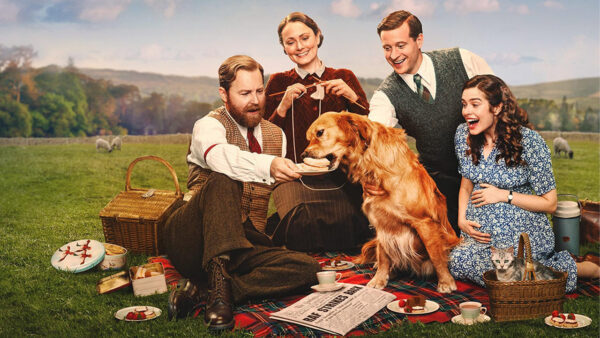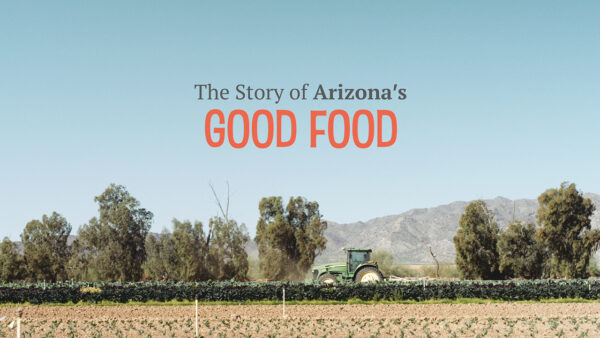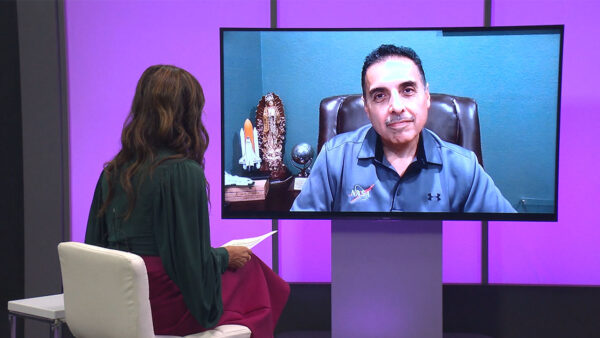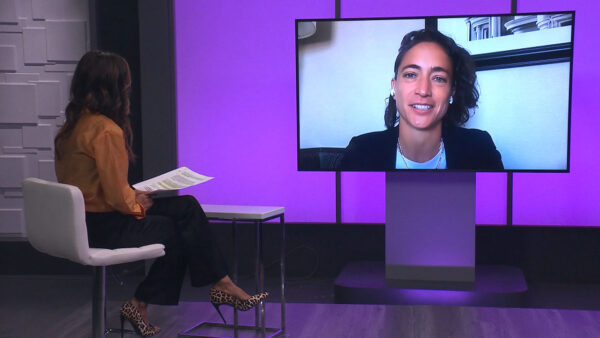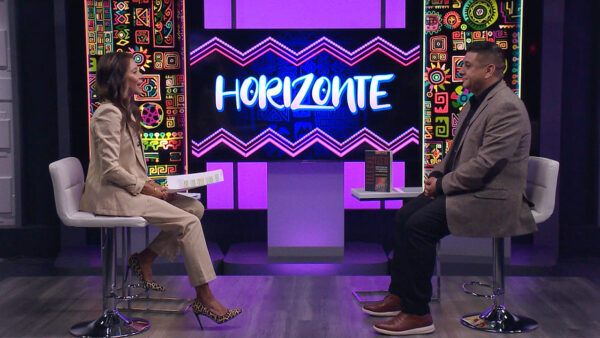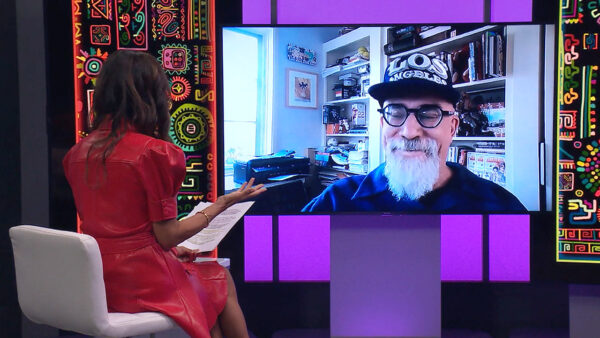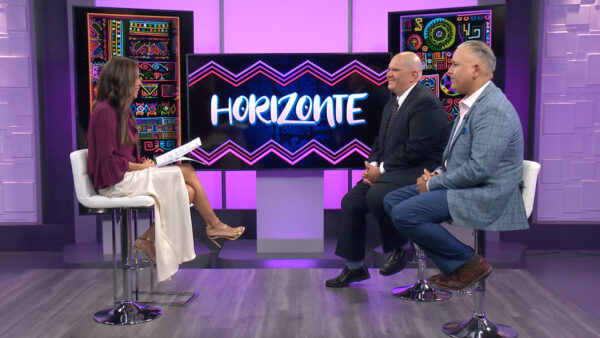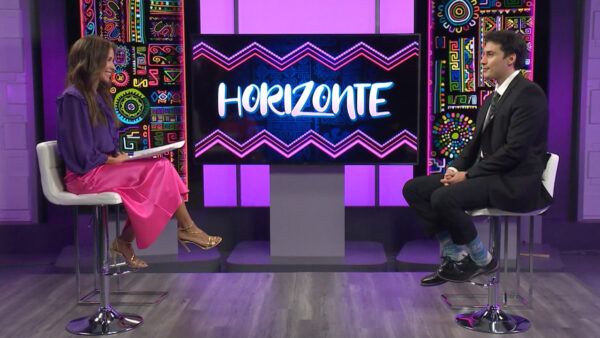The San Francisco Xavier Mission celebrated its 75th anniversary. The mission was built in 1940 by migrant Francisco Vasquez in Phoenix. Antonio Ribera, director for the San Francisco Xavier Mission talks about the history of the mission.
JOSE CARDENAS: Good evening, I'm Jose Cardenas. Tonight on "Horizonte." Learn about the history of the San Francisco Xavier mission in south Phoenix. And in "Sounds of Cultura" SOC, a celebration of Frida Kahlo's life at the Heard Museum. All this coming up on "Horizonte."
VIDEO: Funding for "Horizonte" is made possible by contributions by the friends of eight, members of your Arizona PBS station.
JOSE CARDENAS: Thank you for joining us. This year the San Francisco Xavier mission celebrated its 75th anniversary. The mission was built in 1940 by migrant Francisco Vasquez in south Phoenix. Joining me to talk about the mission and its history is Antonio Ribera, director for the mission. Antonio, welcome to "Horizonte."
ANTONIO RIBERA: Thanks for having me.
JOSE CARDENAS: I want to start with a picture of your grandfather, the man who founded the mission. This is him at a later stage in his life but he came to the United States when? He was about 17?
ANTONIO RIBERA: He was very young. I know he came approximately 1915.
JOSE CARDENAS: He came to Phoenix?
ANTONIO RIBERA: He actually came to Tombstone first and then tombstone to Phoenix. I guess it was a long haul.
JOSE CARDENAS: It was a long time before he actually built the mission.
ANTONIO RIBERA: Correct. Purchased the land in 1928 and built the mission in 1940.
JOSE CARDENAS: Why did he do that?
ANTONIO RIBERA: At that time there was a large group of migrant workers in south Phoenix, responsible for digging the canal system that we now have in the Tempe, Phoenix area. Agriculture was really large. At that time they needed a place to worship. There was maybe only a couple of Catholic churches at that time and he felt compelled, as a promise for the saints, to help his family and migrant families to have a place to worship.
JOSE CARDENAS: And he dedicated it to this particular saint who is very popular in Senora, as I understand.
ANTONIO RIBERA: Correct.
JOSE CARDENAS: What was his connection to your grandfather?
ANTONIO RIBERA: He's from Senora and he was familiar with the San Francisco mission -- he had a lot of faith in the saint for health and safety and typical to make a promise for the saint to help you. You know. And he is very familiar with that saint and like a lot of Sonorans.
JOSE CARDENAS: The first is an outside shot of the mission. It looks in pretty good shape.
ANTONIO RIBERA: It was built very well. I know he had help to build it. To this day, structurally it is very sound. We do maintain repairs on it as we go along, as we get funds or whatever, but overall, structurally-wise very sound and doing very well, actually.
JOSE CARDENAS: A couple of more pictures of the interior. This is the chapel.
ANTONIO RIBERA: That's the interior for the mission itself.
JOSE CARDENAS: And in the background, you can see something you wouldn't normally see in a Catholic church in the United States or Phoenix, but traditional in Mexico, image of the saint laying prone.
ANTONIO RIBERA: Yes, that saint actually came from Sonora, Mexico, and well-known for building or making those type of saints life size. In some places different sizes. That one actually came from Mexico. I believe that one came in -- I'm guessing shortly after the mission was built and it has been replaced since because of damage or whatever, but that's where they come from and that's typical in these type of missions is the life-size laying down saint.
JOSE CARDENAS: We have one more picture of the interior. This is I assume mass being celebrated.
ANTONIO RIBERA: Baptismal -- we get assistance from a priest that helps us out. When public requests a sacrament, baptism or marriage then a priest comes and helps us.
JOSE CARDENAS: You don't get any financial support from the diocese.
ANTONIO RIBERA: No.
JOSE CARDENAS: It has been in the family all of these years. How it got from your grandfather to you and I think your sister, the two who now run it.
ANTONIO RIBERA: My grandfather ran it from 1940 to 1971, and then it was ran by my mother, they called her NICHA, which lived next door from 1971 to 2003, her passing, and then it was given down to the family to eventually 2003-2010, two uncles, Poncho and Simon Vazquez, that ran it and until their untimely death in 2010. And then it went to my older sister, which is the final -- beneficiary of the estate, she asked me at that time to help her operate it. It stays in the family and eventually will be willed to someone else in the family.
JOSE CARDENAS: And it's been open for worshippers to go visit.
ANTONIO RIBERA: Yes, unlike traditional Catholic churches. We don't do basically organized religion. We leave it open for people to have a place of serenity, go pray, light candles. It's more of a visitation type atmosphere. Very peaceful, very special and that's how we want to keep it. We want -- want to be open to the public, be available if they need something special, service of some kind, we open it for them. But our operation Saturday and Sunday 8:00 to 5:00 and basically my sister, Peggy, she's another director of the nonprofit and family members and stuff, we leave it open for the public. We go with the flow.
JOSE CARDENAS: And we should tell people how to get there. It's out near south mountain but where? How would somebody get to it?
ANTONIO RIBERA: If you are familiar with baseline road, 24 street, baseline road, south towards the mountain and then east 2844. You can't miss it. A white church, small road. Basically 24 street, baseline south, southbound avenue, go east to 2844, and it is not hard to find.
JOSE CARDENAS: You talked about some of the traditional uses of the church. You have initiated things that are new at least here. Not necessarily different from what's done in Mexico. We have an image of one of the pilgrimages. In Mexico, they're very famous, in Senora, you will see hundreds of people walking the highway doing the pilgrimage and you decided to start that here. Tell us about that tradition and this is the first time you've done it here.
ANTONIO RIBERA: Yes, this is the first time we did it, October 4th. And Sonora -- they have a large pilgrimage from Nogales. It's a two day pilgrimage, many people do it. A lot of people come to our mission that are from Senora or different parts of Mexico and obviously they have for whatever reason they can't participate in their pilgrimage and they express the need to do a pilgrimage here. That's why I came up with the idea of starting up the pilgrimage from Circle K Park, down the canal road to the mission which is on the canal. This is our first year. It was a success, I think, and I think we want to continue it next year and see how -- what kind of response we have. It was very special pilgrimage this year.
JOSE CARDENAS: One last image we have, again, example of incorporating a tradition from Mexico, which celebrated in some churches here in the United States, but these are the Matachines who perform at some of the fiestas that you have.
ANTONIO RIBERA: Every fiesta we have we make sure the Matachines are there - Matachine, historically would use them for the Matachine of Guadalupe for whatever reason -- they still do their celebration there, but we have different -- we have two groups that come over, Matachine Estrella. That started two years ago. And that tradition is a group that dance for the saint or for god and part of their promise, part of their religious development is to help and do something for the church. And they dance. And it is a very beautiful dance. Very traditional. Music is very traditional.
JOSE CARDENAS: A beautiful dance and a beautiful church. Thank you for joining us on "Horizonte."
ANTONIO RIBERA: Appreciate it. Thank you for having me.
VIDEO: Watch sneak previews of what's coming soon to eight. Go to azpbs.org/preview today.
Antonio Ribera: director for the San Francisco Xavier Mission


